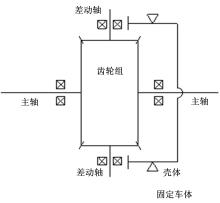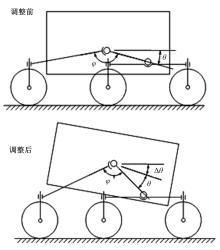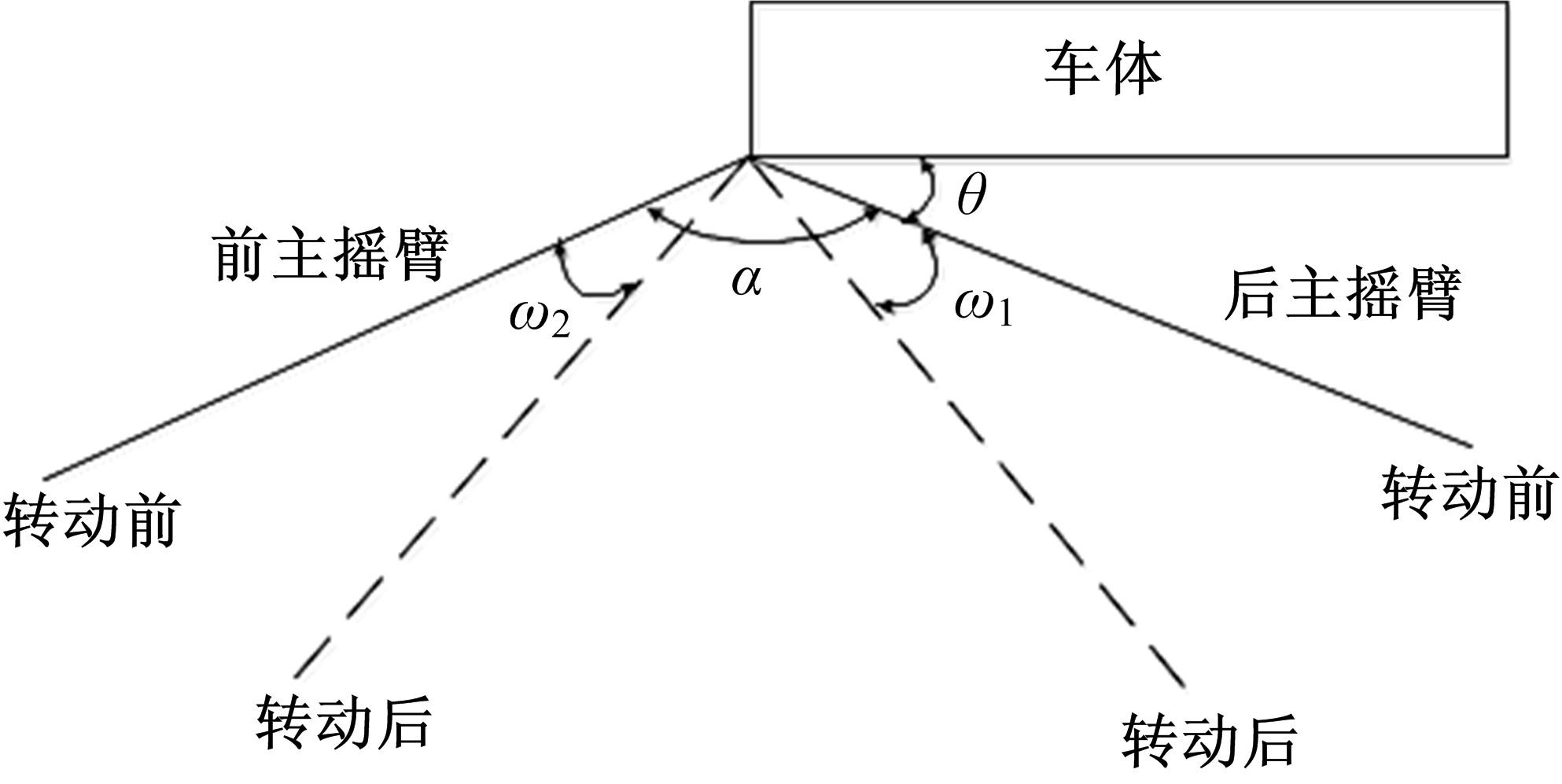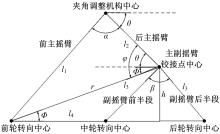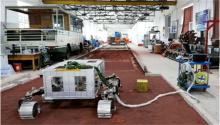Journal of Jilin University(Engineering and Technology Edition) ›› 2021, Vol. 51 ›› Issue (1): 154-162.doi: 10.13229/j.cnki.Jdxbgxb20200604
Design active suspension system and creeping control strategy for mars rover of China
Bao-feng YUAN1( ),Cheng-en WANG1,Meng ZOU2,Ya-fang LIU3,Yun-cheng LIN3,Yang JIA3,Bai-chao CHEN3,Jing-fu JIN2
),Cheng-en WANG1,Meng ZOU2,Ya-fang LIU3,Yun-cheng LIN3,Yang JIA3,Bai-chao CHEN3,Jing-fu JIN2
- 1.School of Mechanical and Power Engineering,Shanghai Jiao Tong University,Shanghai 200240,China
2.Key Laboratory of Bionic Engineering,Ministry of Education,Jilin University,Changchun 130022,China
3.Institute of Spacecraft System Engineering,CAST,Beijing 100094,China
CLC Number:
- V416
| 1 | Yingst R A, Cropper K, Gupta S, et al. Characteristics of pebble and cobble-sized clasts along the curiosity rover traverse from sol 100 to 750: terrain types, potential sources, and transport mechanisms[J]. Icarus, 2016, 280: 72-92. |
| 2 | Arvidson R E, Iagnemma K, Maimone M, et al. Mars science laboratory curiosity rover megaripple crossings up to Sol 710 in Gale Crater[J]. Journal of Field Robotics, 2017, 34(3): 495-518. |
| 3 | Blake D F, Morris R V, Kocurek G, et al. Curiosity at gale crater, mars: characterization and analysis of the rocknest sand shadow[J]. Science, 2013, 341: 1239505 |
| 4 | Arvidson R E, Bell J F, Bellutta P, et al. Spirit mars rover mission: overview and selected results from the northern home plate winter haven to the side of scamander crater[J]. Journal of Geophysical Research: Planets, 2010, 115(E7): 633-650. |
| 5 | Squyres S W, Arvidson R E, Bollen D, et al. Overview of the opportunity mars exploration rover mission to meridiani planum: eagle crater to purgatory ripple[J]. Journal of Geophysical Research, 2006, 111(E12): 1-19. |
| 6 | Ellery A. Planetary Rovers: Robotic Exploration of the Solar System[M]. Berlin: Springer, 2015. |
| 7 | 张元勋, 黄靖, 韩亮亮. 星表移动探测机器人研究现状综述[J]. 航空学报, 2020, 8: 1-19. |
| Zhang Yuan-xun, Huang Jing, Han Liang-liang. Review: research status of planetary surface mobile exploration robots[J]. Acta Aeronautica et Astronautica Sinica, 2020, 8: 1-19. | |
| 8 | Arvidson R E, Degrosse P, Grotzinger J P, et al. Relating geologic units and mobility system kinematics contributing to Curiosity wheel damage at Gale Crater, Mars[J]. Journal of Terramechanics, 2017, 73: 73-93. |
| 9 | Ding L, Deng Z Q, Gao H B, et al. Interaction mechanics model for rigid driving wheels of planetary rovers moving on sandy terrain with consideration of multiple physical effects[J]. Journal of Field Robotics, 2014, 32(6): 827-859. |
| 10 | 薛龙, 党兆龙, 陈百超, 等. 地面力学在火星壤力学参数估计研究中的进展与展望[J]. 宇航学报, 2020, 41(2): 136-146. |
| Xue Long, Dang Zhao-long, Chen Bai-Chao, et al. Advances and prospects of martian soil parameter identification based on terramechanics[J]. Journal of Astronautics, 2020, 41(2): 136-146. | |
| 11 | Yang J, Dong M M, Ye J T. A literature review of the rocker-bogie suspension for the planetary rover[C]∥ Proceedings of the International Seminar on Artificial Intelligence, Networking and Information Technology,Thailand, 2017:137-142. |
| 12 | Patel N, Slade R, Clemmet J, et al. The ExoMars rover locomotion subsystem[J]. Journal of Terramechanics, 2010, 47(4): 227-242. |
| 13 | Heverly M, Matthews J, Lin J, et al. Traverse performance characterization for the mars science laboratory rover[J]. Journal of Field Robotics, 2013, 30(6): 835-846. |
| 14 | Ono M, Fuchs T J, Steffy A, et al. Risk-aware planetary rover operation: autonomous terrain classification and path planning[C]∥IEEE Aerospace Conference Proceedings, Bigs Sky,USA,2015: 1-10. |
| 15 | 薛龙, 党兆龙, 陈百超, 等.面向火星着陆器缓冲试验的模拟火星壤力学特性分析[J]. 吉林大学学报:工学版, 2019, 49(1): 176-186. |
| Xue Long, Dang Zhao-long, Chen Bai-chao, et al. Terra-mechanics of Mars soil simulant for Martian Lander's landing tests[J]. Journal of Jilin University(Engineering and Technology Edition), 2019, 49(1): 176-186. | |
| 16 | Zhou F, Arvidson R E, Bennett K, et al. Simulations of mars rover traverses[J]. Journal of Field Robotics, 2014, 31(1): 141-160. |
| 17 | John L C. Mars Exploration Rover Spirit end of mission report[R]. Los Angeles: California Inst of Tech, Pasadena Jet Propulsion Lab, 2015:1-34. |
| 18 | 李建桥, 薛龙, 邹猛, 等. 已有模拟火壤力学性质分析及新火星壤研制[J]. 吉林大学学报:工学版, 2016, 46(1): 172-178. |
| Li Jian-qiao, Xue Long, Zou Meng, et al. Terra-mechanics characters and development of Martian simulant regolith [J]. Journal of Jilin University(Engineering and Technology Edition), 2016, 46(1): 172-178. |
| [1] | WANG Jun-nian, YE Tao, SUN Wen, WANG Qing-nian. Vibration isolation performance of energy-regenerative semi-active suspension with variable stiffness and damping [J]. 吉林大学学报(工学版), 2017, 47(3): 701-708. |
| [2] | LI Jing, ZHANG Jia-xu. Integrated control of vehicle chassis system based on robust L2-L∞/H∞ method [J]. 吉林大学学报(工学版), 2016, 46(6): 1757-1764. |
| [3] | LI Jing, WANG Zi-han, QIN Min, ZHUO Shuai-shuai, CAO Zhen. Design of vertical speed signal filter circuit for semi-active suspension with SimScape [J]. 吉林大学学报(工学版), 2014, 44(4): 912-917. |
| [4] | CHEN Shuang, ZONG Chang-fu, ZHANG Li-jun, YIN Gang. Research on integrated control strategy of ride and roll attitude via active suspension [J]. 吉林大学学报(工学版), 2011, 41(增刊2): 59-64. |
| [5] | MA Li, ZHANG Zhou-yun, GONG Jun. Data disposal of electrical dynamometer system based on RBF neural network and virtual instrument used in vehicle [J]. 吉林大学学报(工学版), 2011, 41(增刊2): 311-315. |
| [6] | LIU Wei,SHI Wen-ku,GUO Fu-xiang,SHEN Zhi-hong,FANG De-guang. Coordinated optimal of automotive suspension based on steering stability [J]. 吉林大学学报(工学版), 2011, 41(03): 602-607. |
| [7] | LI Jing, YU Chun-Xian, SONG Da-Feng, ZHAO Jian, ZHOU Yu. Dampingadjustable shock absorber of semiactive suspension for automobile [J]. 吉林大学学报(工学版), 2010, 40(增刊): 13-0016. |
| [8] | LIU Shun-An, YU Xian-Li, YAO Yong-Ming, CHEN Yan-Li. Vehicle optimization—intelligence integrated control active suspension system based on pitch angle optimization [J]. 吉林大学学报(工学版), 2010, 40(增刊): 17-0023. |
| [9] | CHEN Yi-jie,GU Liang,YANG Zhan-hua,LEI Qiang-shun,HUANG Yu-xin. Heat balance and influence factor of semi-active hydro-pneumatic spring [J]. 吉林大学学报(工学版), 2010, 40(04): 1034-1038. |
| [10] | Yu Shu-you,Chen Hong . H∞/generalized H2 control of active suspension based on moving horizon strategy [J]. 吉林大学学报(工学版), 2007, 37(05): 1164-1169. |
| [11] | LI You-de, SONG Da-feng, LI Jing, CHU Liang, WANG Dong-ke. Shock absorber controller of damping-adjustable semi-active suspension for CA6440 light-duty bus [J]. 吉林大学学报(工学版), 2004, (1): 71-74. |
|
||


